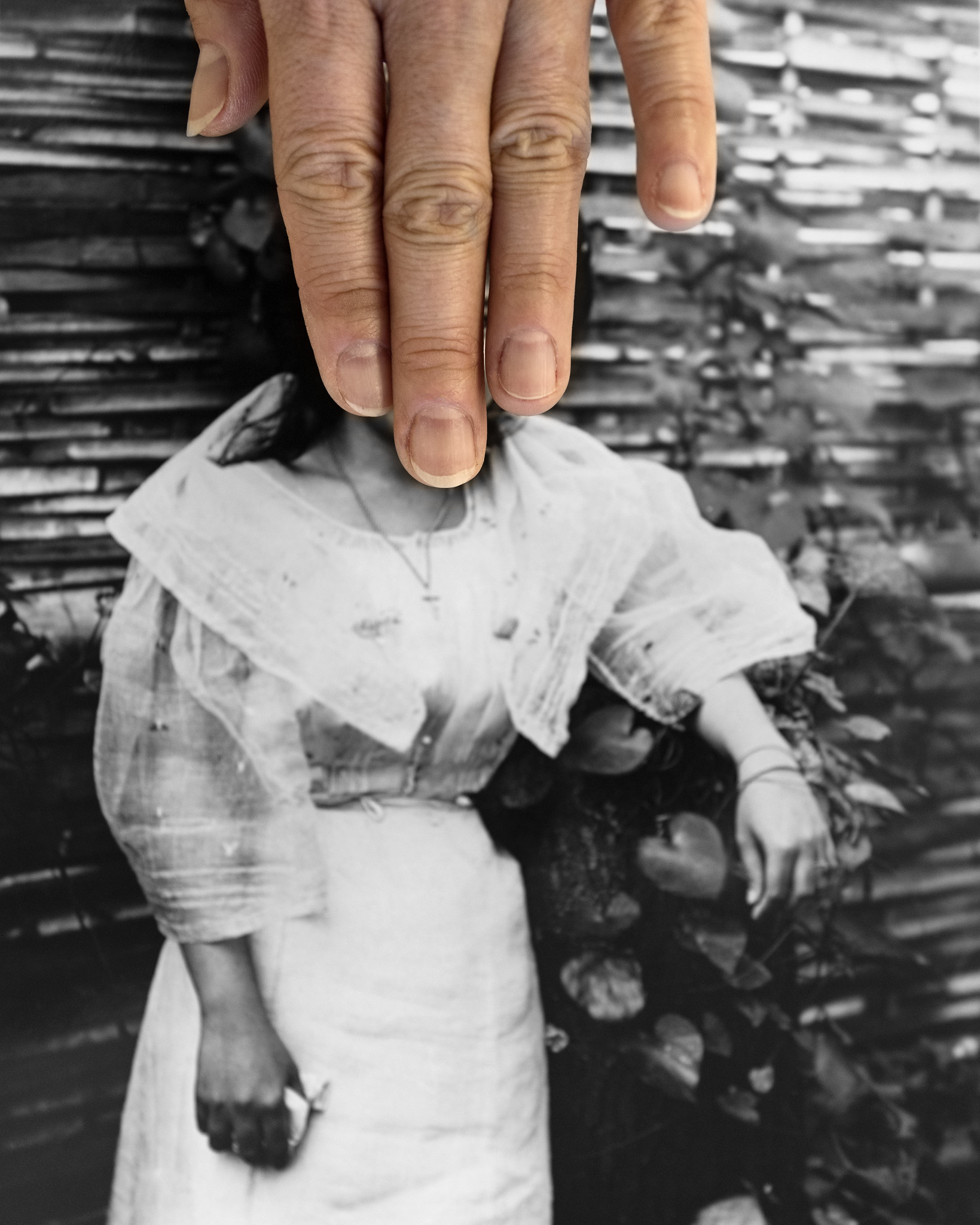Excerpt from “Interview with Stephanie Syjuco” in Living Pictures (2022) edited by Charmaine Toh. Available for access in its entirety, on Project Muse and JSTOR.
IX. Interview with Stephanie Syjuco
Block Out the Sun developed out of a two-week
artist residency in the city of St. Louis, Missouri in 2019.
During that time, Stephanie Syjuco researched local archives
for information relating to the 1904 World’s Fair,
particularly records of the exposition’s Filipino Village.
The following is an excerpt from an email conversation
between the artist and curator Kenneth Tay in April 2022.
Kenneth Tay (KT): Why did you choose to intervene into these pseudo-ethnographic images of newly imported Filipinos? And why did you allow these images, however problematic, to circulate once more—albeit through your own presence as a Filipino-American artist? It seems like this was quite an important thing for you to do in the political climate of the US back in 2019?
Stephanie Syjuco (SS): Archives are intensely problematic yet important spaces for collective memory. Problematic in that they record a heritage based on what was considered important at the time, and that includes racist, violent and disturbing realities—often without a contextualisation that challenges them as being just neutral documents. By rephotographing my hands partly obscuring the original images, I’m attempting to not erase them from memory or erase them from the archive, but to prevent them from functioning within the narrative they were given—namely that these individuals would be conscripted to showing, in perpetuity, the dominance of empire as its ability to display others as savage or needing colonization in order to progress as a people. Because that was the intent of the World’s Fair display—not to show beauty or cultural complexity (although perhaps some could read that as a side effect), but to show off these people as symbols of conquest. So why show these images again, now? Interestingly, most Americans have no knowledge about this early contact moment with the Philippines, or that the Philippines was once ever an American colony, and the site of a war that took over 100,000 Filipino lives. If anything, the Philippines does not exist in the American imagination at all, so I felt it was important to resuscitate this history in some way. And because over 100 years after these photographs were taken in the US, we are still confronting a distorted vision of America that posits a nation of “insiders” and “outsiders”—a country that is being overrun with hordes of brown immigrants who are not equal to white, European, civilised society. In attempting to excavate why we as a country are still turning this over and over, I wanted to look back at some of the earliest images of Filipinos taken in America, and to see how they also fed into similar positioning of Native Americans and Black Americans—that we were all lumped into varying degrees of not meeting standards, of not belonging. In the United States, white supremacy is a particularly insidious vision in that it has structured our archives, our institutions, and our very technologies of seeing and being seen (i.e., photography and imaging technologies) through its lenses, and yet presents itself as enlightened and democratic. With a contemporary resurgence in white nationalism, I wanted to challenge that vision from a root of historical engagement, and to show that theirs has been a longstanding, ongoing project…As a photographically-based work, I was thinking about how light generated by the sun is the literal waythat these original images were made: by light bouncing off a subject, into a camera, and then onto emulsion. I find irony in the motto “let there be light”—as if shining light on something will lead to truth or enlightenment, when in the medium of photography, images were used to conscript and assign value when used as ethnographic tools. Block Out the Sun references my literal blocking of the light using my own hands on these images 100 years later, and also considers what it means to deflect the image itself, and prevent it from functioning in its original intent.
